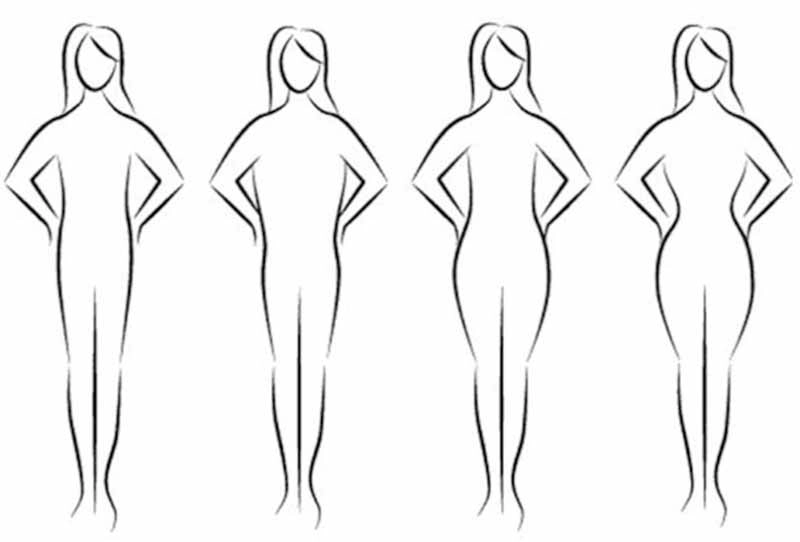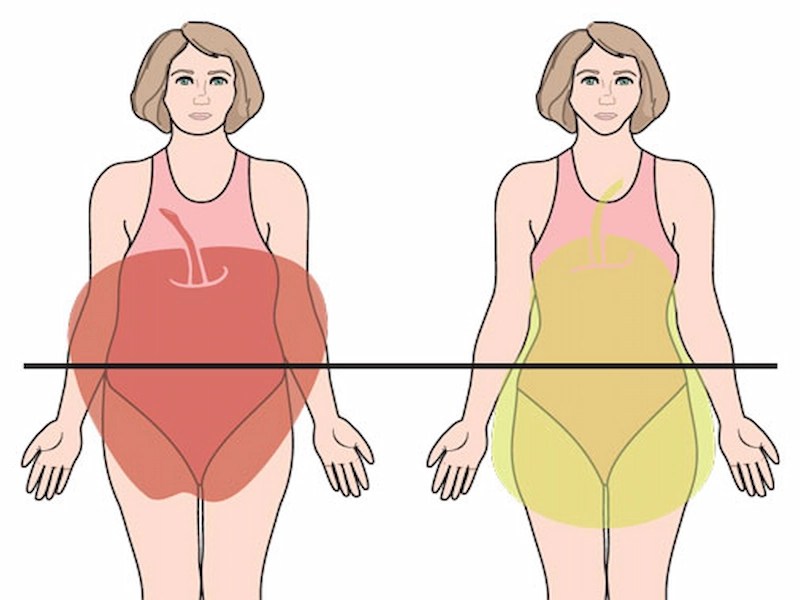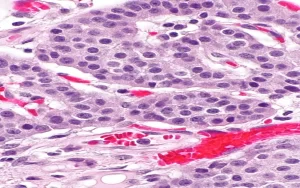Obesity is usually defined as a body mass index (BMI) that is too high. A BMI of 30 or higher is a common measure of obesity in adults. A body mass index of 40 or higher is considered severely obese (formerly called “morbid obesity”), which implies the complications of obesity. Childhood obesity is measured by growth charts. Types of obesity can be divided according to its severity, appearance and cause. But usually when talking about the types of obesity, it means the form of obesity and the place where fat accumulates.

What is obesity?
Obesity is a complex and chronic disease with multiple causes that leads to the accumulation of excessive fat in the body and decrease in health. Of course, excess fat is not a disease in itself. But when your body has a lot of fat, its function changes. These changes are progressive and can worsen over time, leading to adverse health effects.
Types of obesity in terms of severity
Health care providers classify obesity into three groups based on its severity and use BMI to do this. It should be noted that if a person’s BMI is between 25.0 and 29.9 kg/m2, they are placed in the “overweight” category, and in other words, they are not considered “obese”. There are three general categories of obesity based on severity, for which the treatments offered can vary. These three categories are:
- Class I obesity: BMI 30 to <35 kg/m².
- Class II obesity: BMI 35 to <40 kg/m².
- Class III obesity: BMI 40+ kg/m².
“Morbid obesity” is an old term for class three obesity. In medicine, “morbidity” means the condition of suffering from a disease or medical condition. Doctors have referred to class three obesity as a “morbid obesity” because it is likely to be associated with various diseases. However, the term has now been abandoned due to its negative connotations.
How is childhood obesity evaluated?
Doctors also use BMI to calculate obesity in children, but they check it in relation to the age and gender of the child. A child older than 2 years is considered obese if his BMI is greater than 95% of his peers of the same sex. There are different growth charts for these calculations.
Types of obesity in terms of the place of fat accumulation
In general, it can be said that the place of accumulation of fat in the body is in the abdomen and hips. Although usually in obesity, fat accumulates in the abdominal area, but in some people, this accumulation is more and more intense; Meanwhile, in some other people (generally women before menopause), fat accumulates more in the hips and thighs. These two types of obesity are called apple-shaped and pear-shaped obesity.
Gastric bypass surgery is one of the useful and effective methods for weight loss and obesity treatment. Bariatric is the scientific name of gastric bypass, after which people will see a significant reduction of their excess weight. During gastric bypass surgery, the surgeon reduces the length of the digestive tract. In this way, a person consumes less food during the day
Pear-shaped obesity
This type of obesity means more accumulation of fat in the lower body (thighs and hips) and due to the action of sex hormones in women, it usually occurs before menopause. However, after menopause, the obesity pattern of these women also becomes apple-shaped, similar to men. In other words, with hormonal changes, less fat accumulates in the hips and thighs, but accumulates in the abdomen and around the viscera. Of course, this does not mean that women do not get apple-shaped obesity before the age of menopause, but it means that pear-shaped obesity is mostly seen in women before menopause.
Apple-shaped obesity
Apple-shaped obesity is a common type of obesity that occurs in men and in women (mostly after menopause). In this type of obesity, fat accumulates in the abdominal area and around the intestines and widens the middle part of the person’s body. This widening of the middle part gives the person’s body an apple-shaped appearance, and for this reason, this type of obesity is called apple obesity.

Is apple-shaped or pear-shaped obesity more common?
As mentioned, most of the obese people suffer from apple-shaped obesity, which is the worst type of obesity in terms of health effects. Studies show that fat that accumulates around the abdominal area is most associated with previous vascular diseases and diabetes type of 2. it releases factors in the blood that cause inflammation and affect the proper functioning of hormones. For this reason, among the two types of obesity, apple-shaped obesity, which is the most common type, is associated with more health-related problems.
Causes of obesity
Although in most cases more than one cause is involved in obesity, in general it can be said that causes of obesity include the following:
Obesity caused by physical inactivity
This type of obesity is caused by inactivity. Physical inactivity not only contributes to positive side of energy balance and obesity, but is also associated with increased markers of systemic inflammation. Physical inactivity occurs when you do not move your body for a long time, or in other words, do not exercise. This can include things like sitting or lying on the couch watching TV or sitting at a desk for long periods of time. The best strategy to prevent this type of obesity is to stay physically active.
Among the advantages of the gastric sleeve, we can mention the improvement of diseases such as the treatment of type 2 diabetes or blood pressure, increasing self-confidence, creating a beautiful body, short-term recovery period, safe and quick surgery.
Obesity caused by consuming too many calories
This type of obesity is one of the most common types and is usually caused by overeating and inactivity. If you consume a lot of energy, especially fat and carbohydrates, but don’t burn it through exercise and physical activity, your body will store a lot of it as fat. The most effective method for prevention and treatment is to adjust the diet and reduce daily food consumption. Avoiding sugar in the diet and exercising for at least 30 minutes a day can help. One of the ways to treat obesity caused by high calorie consumption is bariatric surgery.
Obesity caused by genetics
Some people have genes that predispose them to obesity. There are many known genes for obesity. Some of them make a person extremely fat, and others have an effect on making a person fat and staying fat. In cases of obesity caused by genetics, there is a possibility that in addition to the individual, the pattern of obesity seen in other members of his family is also observed. Depending on the function of the genes, this obesity may become very severe.
Conclusion
There are different ways in which we can classify types of obesity. Classification of obesity in terms of severity, location of fat accumulation and its cause is the most common types of classification. Body mass index is used to determine obesity.
For more information about treatment, see bariatric surgeon Dr. Zandi Bariatric Surgery and General Surgery.



